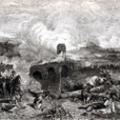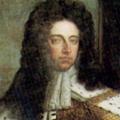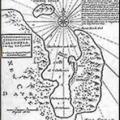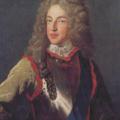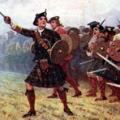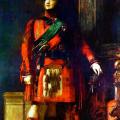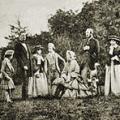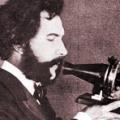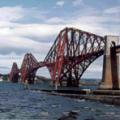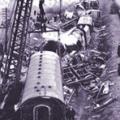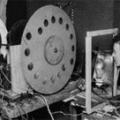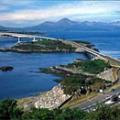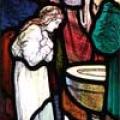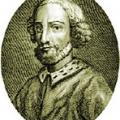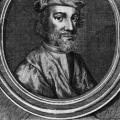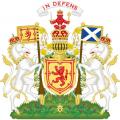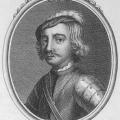Categories
Most Liked
Posted on July 17, 2013
by Amanda Moffet
by Amanda Moffet
Posted on May 12, 2013
by Chas Mac Donald
by Chas Mac Donald
Posted on August 29, 2013
by Amanda Moffet
by Amanda Moffet
Posted on February 6, 2013 by Donald | 0 views | comments
Following success against the military at the recent Battle of Drumclog, the Conventiclers’ support had swollen to six thousand when they came together at Hamilton in June 1679.
Differences between Covenanters which had undermined them through the 1650s, again created factions among their numbers...
Posted on February 6, 2013 by Donald | 0 views | comments
James had converted from Protestantism to Catholicism in 1668 whilst his brother Charles II was monarch. When the King too converted and tried to re-install Catholicism among his subjects around 1672, there was outrage. Acts were passed in Parliament, such as the Test Act, so only Anglicans could ...
Posted on February 6, 2013 by Donald | 0 views | comments
For twenty years the London East India Company had enjoyed soaring success, bringing incredible fortunes to its stockholders through its virtual monopoly of Eastern trade.
By 1695 competitors in the market were using every scandalous technique to have Bills in their favour passed in England’s Par...
Posted on February 6, 2013 by Donald | 0 views | comments
Thanks to the treatment of Scotland before and after the 1707 Union, there was always strong underground support for the reinstatement of the exiled Stewarts to the throne.
Events following the death of Queen Anne in 1714 brought emotions to a level where the man who would lead government forces,...
Posted on February 6, 2013 by Donald | 0 views | comments
Bonnie Prince Charlie’s landing on Scottish soil ignited a firestorm of incredible stories and willing recruits so that the myths encouraged the masses, who encouraged the myths in a cycle. While the stories were drawing volunteers they were worrying the established powers. Sir John Cope, commandi...
Posted on February 6, 2013 by Donald | 0 views | comments
The Jacobites had fought all the way from the Highlands to Derby in England.
Outside of the Highlands it was becoming clear that Prince Charles and his claim was of no interest to Lowlanders or the Northern English, where very few supporters were coming forward. The Stewart intention of using suc...
Posted on February 6, 2013 by Donald | 0 views | comments
King George IV made a royal visit to Edinburgh in 1822.
It was the first time a monarch had come to Scotland since 1641 and his tour was stage-managed by Sir Walter Scott. Scott engineered an image of Scotland similar to the country in his romantic novels for the visit.
Highland Games were re-in...
Posted on February 6, 2013 by Donald | 0 views | comments
The second visit of a United Kingdom monarch to Scotland was in 1842 when Queen Victoria and Prince Albert disembarked at Leith.
Their exploration of Perthshire, walking, reading and deer-stalking, was so pleasurable that they returned annually. In 1852 they bought Balmoral and had the castle bui...
Posted on February 6, 2013 by Donald | 0 views | comments
Born on March 3, 1847 in Edinburgh, Bell is best known for his invention of the telephone however he was a remarkable character and brilliant inventor who came up with many inventions such as an air-cooling system, a way of desalinating sea-water and a sorting machine for punch-coded census cards....
Posted on February 6, 2013 by Donald | 0 views | comments
Descibed as Scotland’s Eiffel Tower, the breathtaking Forth Railway Bridge stands at Queensferry Narrows, nine miles west of Edinburgh, where it carries trains for a mile and a half over the Firth of Forth.
The cantilever structure, with three 340ft high towers, holding the double railway 150ft a...
Posted on February 6, 2013 by Donald | 0 views | comments
On the 22nd May 1915 Three trains; a special troop train, a local train and the night express coming north from Euston Station, London crashed at Quintinshill Junction near Gretna on the Scottish border causing one of Britain's worst rail disasters.
The troop train was one of two carrying the Lei...
Posted on February 6, 2013 by Donald | 0 views | comments
It is regarded by some as Man’s greatest invention, possibly more life-sustaining than fire and certainly more entertaining than the wheel; it is regarded by others as the Anti-Christ; and it began with Helensburgh-born John Logie Baird.
The very first television picture was transmitted by him in...
Posted on February 6, 2013 by Donald | 0 views | comments
The car ferry making the five minute journey between Kyleakin and Kyle of Lochalsh was finally made redundant in 1995 with the opening of the Skye Bridge.
The reasons for and against a large, modern construction in an area of stunning natural beauty, little changed since King Haakon anchored his ...
Posted on February 6, 2013 by Donald | 0 views | comments
Like many of the early Christian Saints, Æbbe was from royal blood.
Æbbe was the daughter of King Æthelfrith the Ravager of Bernicia and his third wife Acha of Deira. She was also related to St. Oswald and St. Edwin, King of Northumbria. Æthelfrith had become the first king of Northumbria when he...
Posted on February 7, 2013 by Donald | 0 views | comments
Cináed mac Duib (Kenneth III) was King of Scots from 997 to 1005. He was the son of Dub mac Maíl Coluim.
The only event reported in Cináed's reign is the killing of Dúngal mac Cináeda by Gille Coemgáin mac Cináeda, by the Annals of the Four Masters s.a. 999. It is not certain that this refers to ...
Posted on February 7, 2013 by Donald | 0 views | comments
Causantín mac Cuilén was king of Scots from 995 to 997. He was the son of Cuilén mac Iduilb.
Causantín became king upon the death of Cináed mac Maíl Coluim, supposedly killed by Finnguala, daughter of Cuncar, Mormaer of Angus, a killing with which Causantín is associated in several accounts. John...
Posted on February 7, 2013 by Donald | 0 views | comments
Dub mac Maíl Coluim was king of Alba. In older histories his name may be found anglicised as Duff; the modern Gaelic version is Dubh, which has the sense of dark or black. It may be that Dub was an epithet, as the Duan Albanach refers to him as Dubhoda dén, Dubod the vehement or impetuous. He was ...
Posted on February 7, 2013 by Donald | 0 views | comments
Idulb mac Causantín was king of Scots from 954. He was the son of Causantín mac Áeda.
Idulb is an Old Irish name derived from either the Old Norse name Hildulfr or the Old English name Eadwulf. Idulb was later rendered Indulf under Old French influence.
John of Fordun and others supposed that Id...
Featured Articles
Most Discussed
Posted on July 16, 2013
by Amanda Moffet
by Amanda Moffet
Posted on February 6, 2013
by Donald
by Donald
Posted on July 17, 2013
by Amanda Moffet
by Amanda Moffet


 View More
View More View Less
View Less